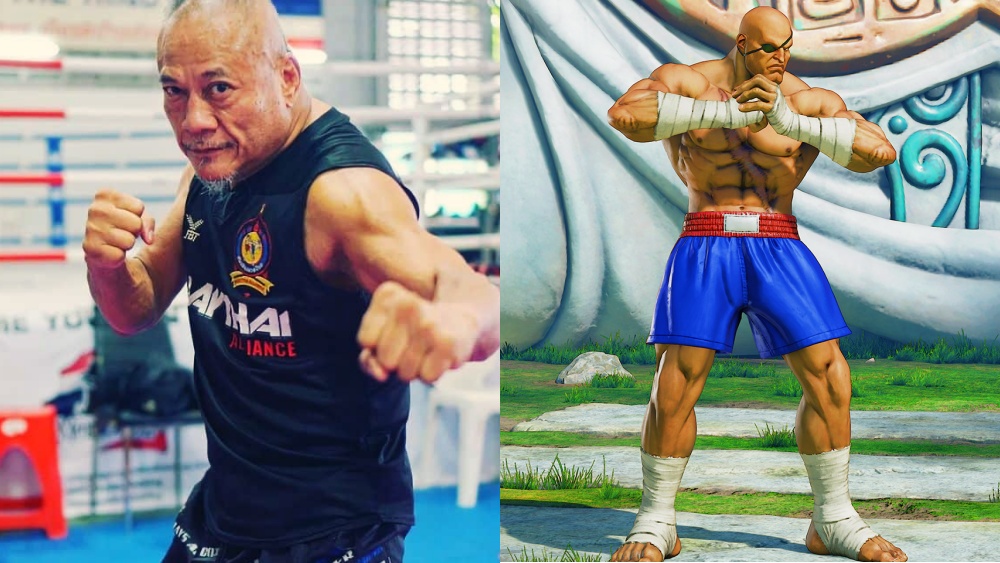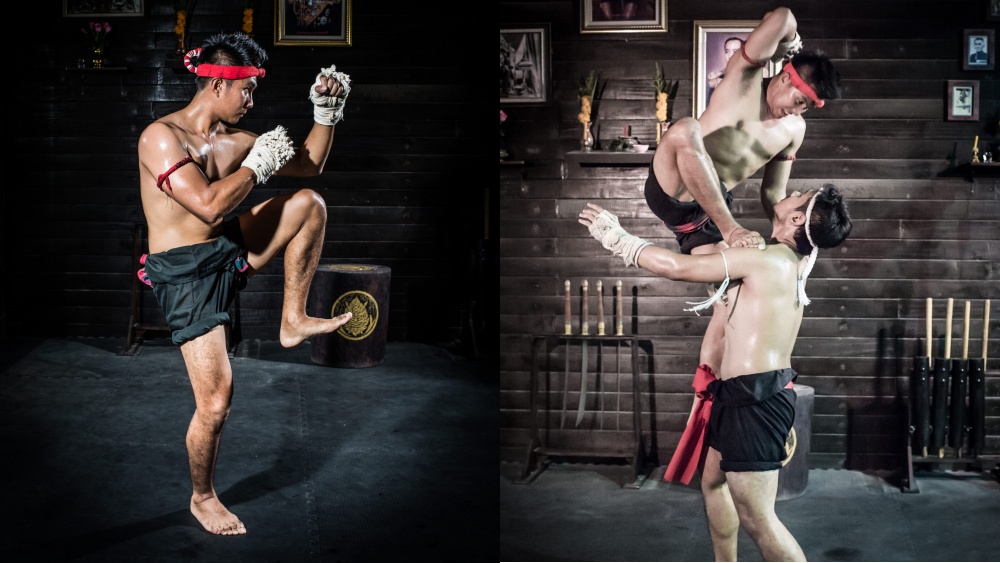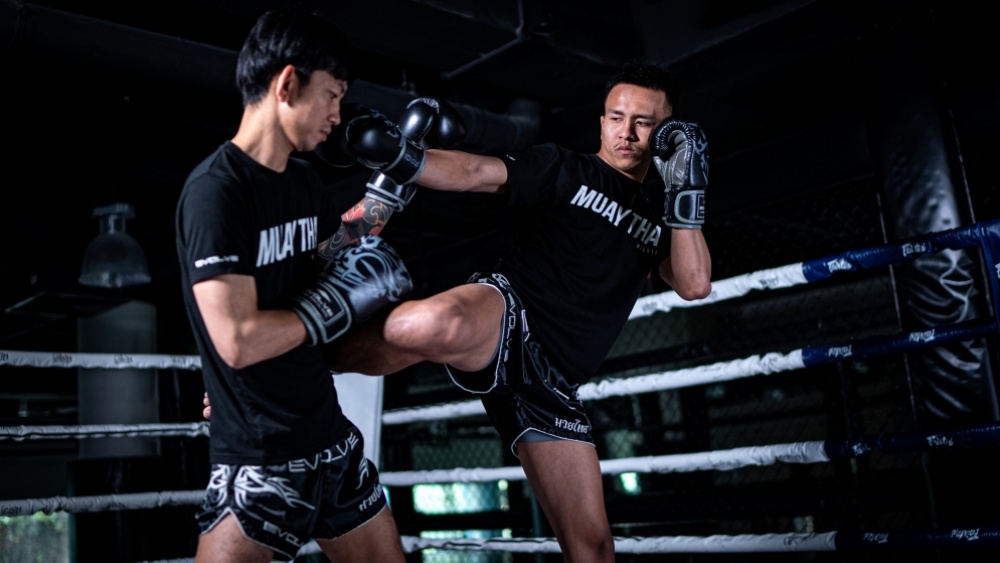Over the decades, Muay Thai has been featured in a plethora of international media. While Muay Thai, with its unique style and culture, has long been listed as an attraction for international film audiences, it is a surprise for many to find out that it has also been heavily featured in video games. In fact, its presence in videogame culture preceded the release of every movie on our watch list.
In 1987, the videogame “Streetfighter,” was released featuring an iconic, eyepatch-toting villain, named Sagat. The towering and muscular antagonist wore Muay Thai shorts with ankle supports and hand wraps. While this costume is a clear homage to the traditional Nak Muay’s attire, this symbolism ran more than just skin deep. This iconic villain was actually based on the real-life Golden Era champion, Sagat Petchyindee.
While the real-life Sagat shares a similar appearance to his videogame alter-ego (minus the eye patch and gigantic build) and was a feared and respected fighter in Bangkok’s stadiums, that’s as far as the similarities went with the two Sagats at the game’s first release. Eventually, some of the real Sagat’s life was used as inspiration for the character’s development in later games. In this article, we’re going to separate fact from fiction and shine a spotlight on one of the most recognizable Muay Thai fighters in history.
Who Was The Real Sagat?
Born in 1957, the real-life Sagat is a three-time Lumpinee and three-time Rajadamnern World Champion. With a career that spanned 317 fights with 151 knockout wins, many of which came from his tenacious Muay Mat style of fighting, he is known to be one of The Biggest Headhunters In Muay Thai and Kickboxing History.
Despite a fearsome ring presence that was developed following his first fight at the age of 11, Sagat claims to have been a peace-loving child who simply loved training under his brother, Saksout, and fighting. This self-described pacifist nature can be traced to Sagat’s early career where he trained under Buddhist monks at their temples, and was no doubt influenced by their calm and altruistic nature. It was here that he learned many of Muay Thai’s cultural aspects such as his award-winning Wai Kru and even his famous “Tiger Uppercut,” a trademark strike that was even adopted into the video game franchise.
After proving himself in the rural stadiums, Sagat moved to Bangkok, joining the legendary Petchyindee Camp where he remained for the remainder of his career. In the major stadiums, Sagat was quick to establish himself as a dominant Muay Mat and used heavy hand combinations to gain many knockout victories. After winning his first Lumpinee Title, Sagat claims that a lack of willing opponents forced him to take a year off competition.
He sought out the advice of monks many times during his career, especially following a string of 9 consecutive losses where, contemplating retirement, they inspired him to shed his ego and persist despite the adversity.
Following a Muay Thai career that saw him face the likes of Samart, Dieselnoi, and Nokweed Davy, Sagat made a successful transition to boxing where his Muay Mat roots helped him claim 12 victories with 8 knockouts from his 14 bouts. Though his boxing career was considerably smaller than his time as a Muay Thai World Champion, he still managed to claim the WBC Asian Lightweight Title as well as the OPBF championship, the latter he held for two successful defenses. Then, following a brief foray into acting, he returned to his Muay Thai roots, this time as a trainer where he raises fighters out of the Ladprao district of Bangkok and occasionally returns to his home, Petchyindee.
Similarities To The Streetfighter Villain
The videogame character, Sagat, made his first appearance in 1987 and it is immediately obvious to Muay Thai fans that, despite standing at seven and a half feet tall and being a brutal villain, the game’s antagonist is modeled after the real-life champion. Not only do they share a name, Muay Thai attire, and the famous “Tiger Uppercut” strike, but sequels to the game also capture aspects of the real Sagat’s Muay Thai journey.
In later installments of the game and comic book crossovers of its story, Sagat undergoes a redemption ark where he befriends monks who inspire him to forsake a life of fighting for prestige to one of the souls where he fights to protect orphans and those in need, perhaps alluding to the real-life Sagat’s association with Buddhist monks and their temples.
In some versions of the video game’s plot, Sagat is also noted to be a trainer, teaching a new generation of (evil) fighters to become hardened Muay Thai champions, perhaps as an allusion to their namesake’s post-fight career as a trainer.
In Summary: A Mixture Of Fact And Fiction
You can’t deny that the videogame Sagat is a clear, artistic interpretation of the Muay Thai champion who shares his name. The attire, fighting style, and even the infamous “Tiger Uppercut” are all direct homages to Petchyindee Gym’s dominant Muay Mat Champion. That being said, the videogame is a work of fiction and only those who have fallen victim to his tremendous hands would claim that the real-world Sagat is a villain. In reality, Sagat claims to be a pacifist, and those who have met him and had his guidance as a trainer attest to his happy, helpful nature.
You may also like:
25 Basic Kickboxing & Muay Thai Combinations You Should Master First

















